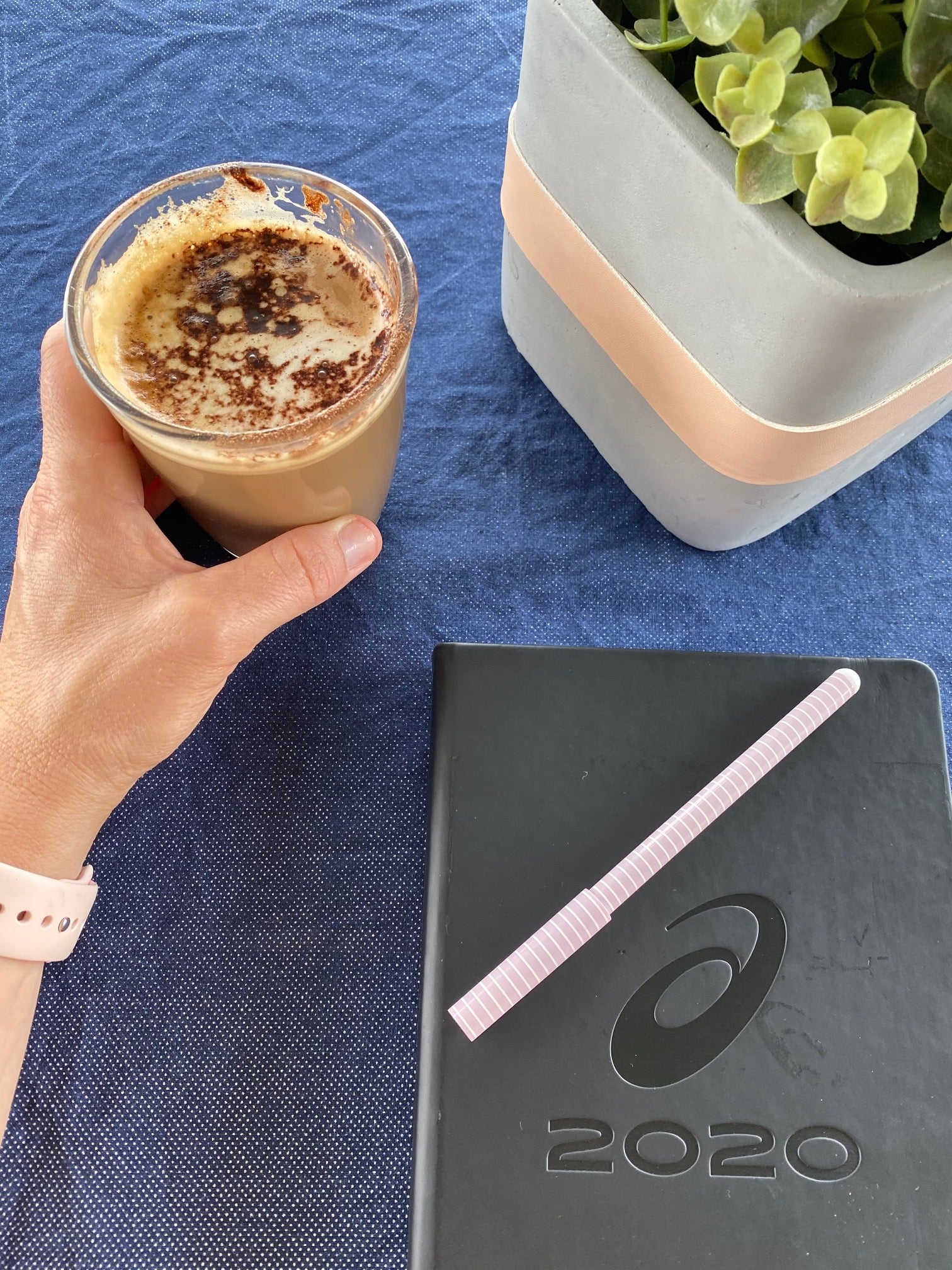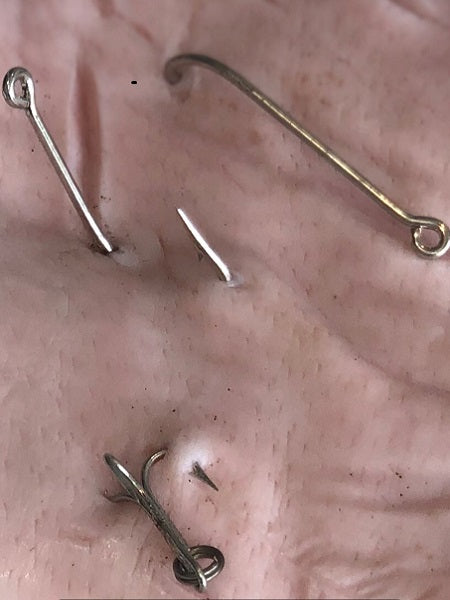A couple of weeks ago, I was fortunate enough to have the opportunity to undergo Metabolic Efficiency Testing using indirect calorimetry, performed by Adam, a Physiotherapist at All Sports Physiotherapy, Indooroopilly.
I had no idea what this testing involved or what it even meant, but I liked the sound of something that would help improve my running results. As many of you know, I had a rather non-eventful running season this year, winding up in two moon boots because of six stress fractures in my feet.

To explain, in addition to training for the Gold Coast Marathon in 2019, I decided to undertake a Transformation Challenge at my local gym with some friends. Much to my Podiatrist husband’s dislike (sorry Pete), I was over-training and, without my Sports Dietitian’s knowledge (sorry Kirrily). I was not fuelling my body correctly. I was impatient and time poor…and clearly not very good at listening to the experts!
Without a sufficient calorie intake for the energy that I was expending, in addition to insufficient rest between my training runs, my bones couldn’t repair from the stress of my long runs. A niggle in my foot progressed to being unable to weight bear, and within two weeks, I was in two moon boots, with both feet having confirmed stress fractures. I won the challenge at the gym (losing 8kg in 8 weeks), but at the cost of my bone health, and not being able to run the marathon.

It would be neglectful of me not to mention that I was so excited about running the marathon in 2019, after a DNF in 2018, when I collapsed at the 39km mark due to hyperthermia and acute renal failure!

So yes, it was very apparent to me that something needed to change with my training, and this Metabolic Efficiency Testing seemed like just the right thing to help me change some bad habits.
So what exactly does Metabolic Efficiency Testing involve?
On the day of my testing, I was required to fast for eight hours prior. As my testing was done in the late morning (to allow my busy husband to attend!), I skipped breakfast, and was well and truly fasted by midday!
Once I arrived at the clinic, I was fitted with a heart rate strap on my chest and a mask that fitted snuggly over my nose and mouth. I was then connected to the small machine that does all the analysing. It’s a really quick and simple process.

Once fitted, I lay on the bed for approximately ten minutes while the machine collected data about my breathing, as well as oxygen and carbon dioxide levels. This was used to calculate my Basal (Resting) Metabolic Rate, or in simple terms, my resting energy expenditure, or how many calories I use in a day, while I am exclusively sedentary.

After my short rest, it was time to undertake the exercise challenge. While I chose to do my exercise test running on the treadmill, there was also the choice to do the exercise test walking on a treadmill, or cycling on a stationary bike.

The exercise test was tailored to my running needs by Adam the Physio. At that point in time, my training basically consisted of five runs of 5-10km per week at a pace of about 12km/hour. With this information in mind, Adam started my testing at 8km/hr on the treadmill, increasing 1km/hr every three minutes or so, until it reached 12km/hr. At the 20 minute mark, running at 12km/hr, the incline was steadily increased every minute until I chose to end the test. After 22 short minutes on the treadmill, the incline got the better of me, and my body was screaming for food and a coffee, so I tapped out!
At the completion of the exercise test, the mask and heart rate monitor were removed, and that was the end. It’s a simple, non-invasive test, provided you’re not uncomfortable having to wear the mask, especially while exercising.

Less than a week later, Adam made another appointment to discuss the results of my testing. This was the day I looked forward to, but also dreaded…what were the results going to show? So, here’s some interesting information that my testing showed.

My resting energy expenditure is 1612 calories/day. This figure really put into perspective the fact that I was very under-nourished while I was undertaking the Transformation Challenge. I was consuming approximately 1400 calories per day, in addition to training for the marathon. Is it any wonder that I ended up with multiple stress fractures? No. The scientific name for being under-fuelled is Relative Energy Deficiency Syndrome or RED-S. Bone health, metabolic and endocrine (hormone) health are all compromised while the body is in this under-fuelled state.
As well as my resting energy expenditure, I was also given ranges of calories/day that would be required for varying levels of activity, from being sedentary to extremely active. I know that counting calories isn’t everybody’s cup of tea, and I don’t habitually count calories, but for me, I found these ball-park figures very helpful and informative.

Overall, my resting metabolism was considered to be sub-optimal. The ability of my cells to burn fuel and produce energy was less than ideal. Lower performance in this area is associated with fatigue and issues with weight management, which can become problematic over time.
The results of the exercise test were equally as interesting. Firstly, here's a little about how your metabolism works: When you breathe, oxygen is carried to your muscles where carbohydrate and fats are used as fuel to create energy to keep the muscles working. Your body’s preferred fuel source is fats. It relies on oxygen (aerobic) and produces more energy. Alternatively, carbohydrates don’t rely on oxygen and provide quick bursts of energy. However, your body only has a small storage of carbohydrates, so this is why we need to fuel adequately and frequently with carbohydrate during endurance exercise.

My fuel burning profile showed that at a lower rate, my body uses my readily-available fat stores for energy. In this “steady state”, my engine was working at optimal efficiency, and I felt strong when running. However, once my heart rate increased, (even by a meagre 30 beats/min, which was very minimal exertion while exercising), my body started to access the carbohydrates in my bloodstream. Carbohydrates became my body’s main fuel source once my heart rate reached 120+ BPM. My body continued to rely on this fuel source, right up until my maximal exertion (and my fat burning profile reduced down to zero).
Good endurance athletes, have a higher fat burning capacity. This means that their body is able to use this fuel source for longer before dipping into their carbohydrate stores. This is something I hope to achieve by re-training my fuel burning system.
So how do I do re-train my fuel burning system?
Given I now know the heart rate at which my body switches fuel sources, I am going to modify my training so that I am exercising in a target rate zone, in an attempt to get my body to preferentially use fats as a fuel source, for as long as possible (while still ingesting adequate carbohydrates to keep my stores topped up in my endurance training sessions). For me, this means significantly slowing down my running pace. I now know my optimum fat utilisation occurs at a heart rate of 119-128 BPM, which is at 8km/hr. As my body adapts to using fats as its primary fuel source, I’ll see an improvement in this speed and heart rate, which will ultimately improve my performance.
In order to keep my fitness levels high (because my V02 max was measured to be in the top 90-94% for my age), my training runs will be punctuated with some interval sessions and “regular” threshold training as I’ve learnt precisely my VT1 and VT2. (VT1 and VT2 are otherwise known as Ventilatory Thresholds or markers of intensity observed in breathing when lactate starts to accumulate).
An interesting point that Adam made about the interval training was to ensure that the rest periods between intervals was as much as four to eight times the period of exertion. Also, ideally, any increase in heart rate during an interval is less of a focus, as the goal for interval training is maximal muscle exertion to create the greatest mitochondria adaption. One way to do this, is to increase the incline instead of the speed on the treadmill.
My goal is to retrain my fuel burning system for the next few months so that when I increase my training in preparation for my next marathon, I am adequately fuelled, hydrated and prepared!
So, with my new training strategy in hand from Adam the Physiotherapist, as well as some sensible advice on a sustainable (higher calorie!) nutrition plan from Kirrily my Sports Dietitian, I’m ready to make some modifications to my training and nutrition!

I look forward to trialing this new training regime for three months, and re-doing my Metabolic Efficiency Testing again to see if I have successfully been able to modify my fuel burning profile to make my body more efficient and more enduring for my long distance running. I’ll keep you posted!


